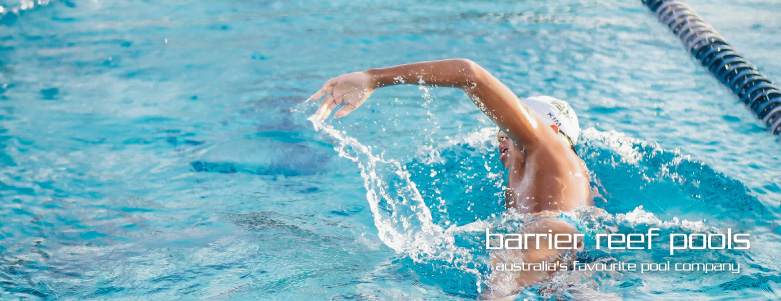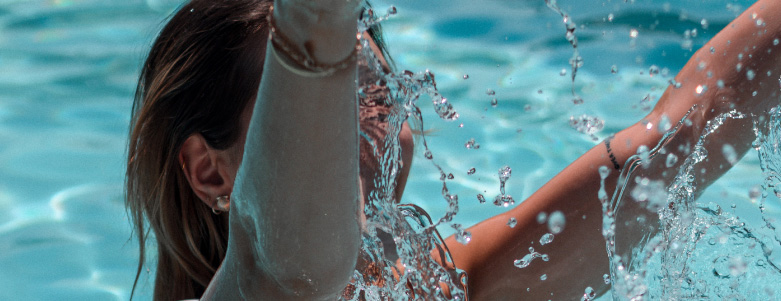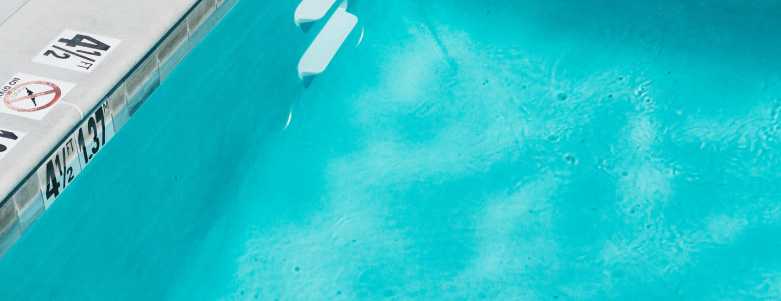A Comparative Guide To The Best Pool Liners
Knowing the ins and outs of the various types of pool liners is important. It will come in handy when you have to invest in a new liner for your above-ground or in-ground pool. In this article, we'll take you through the best pool liner types to consider investing in. We'll also highlight their pros and cons, so you can make the most informed buying decision when it's time to replace your liner. So, without any further delay, let's dive right in!

Above-ground pool liners
Liners available for above-ground pool liners are made of vinyl. Their purpose is twofold – for starters, they hold the water in, and they also contribute to maintaining a swimming pool’s structural integrity. There are three main types of above-ground pool liners – overlap, J-hook (or uni-bead), and beaded liners. The primary differences between the three types of liners for above-ground pools have to do with how they are attached to the walls of a swimming pool.
Overlap liners
If you’re on the lookout for the most cost-effective liner for your above-ground pool, look no further than overlap liners. These liners feature coping strips, which allow the liner to be secured to the swimming pool’s walls. The strips are made of plastic, and they run along the above-ground pool’s top edge.
An overlap liner literally overlaps the wall of a swimming pool from the inside. This ensures a secure liner. During installation, the process of overlapping may lead to unevenness. It’s for this reason that overlap liners are available exclusively in uniform patterns or solid colours. If you want to customise your swimming pool’s appearance, you can mix and match various colours. While there are no functional drawbacks of overlap liners, there is one aesthetic disadvantage. A part of the liner may hang over the swimming pool’s wall and lead to an unappealing appearance. Check out the top solar pool covers for 2022!

J-hook (or unibead) liners
As far as versatility is concerned, there’s no doubt about it – J-hook or uni-bead liners are the best. They boast of two-in-one functionality – you can install a brand new J-hook liner or you can use it to replace an overlap liner. For J-hook installation, all you need to do is to attach the thick, U-shaped vinyl piece at the liner’s top to the pool wall’s top. You can also choose to install these liners like beaded liners. For this, you need to remove the uni-bead system’s J-hook system and secure it into the desired position by snapping.
J-hook or uni-bead liners aren’t just advantageous in terms of installation. They’re also arguably the most visually-appealing type of above-ground pool liners. You can create tile patterns with these liners, which can help your above-ground pool to look like an in-ground pool. Another advantage that J-hook or uni-bead liners provide over overlap liners is the fact that a very little part of it will hang outside the pool wall.
Beaded liners
In terms of variety, beaded liners are the best because you can pick from a diverse array of styles and designs. The liners feature bead receivers, which hang over pool walls after they have been snapped into position. With beaded liners, you won’t achieve much visual appeal, but you can definitely achieve a lot of visual consistency.
The bead receivers, also known as bead tracks, are four feet long each and provide great ease of installation. Following installation, all you need to do is to feed the beaded liner’s bead into the receiver’s channel. Due to their design aspect, these liners are available in a wide variety of intricate designs and patterns. Some of the most popular beaded liner designs include wall borders and tile trims.
See these attractive home swimming pool enclosures for some design inspiration!
In-ground pool liners
Now that you know everything you need to about above-ground pool liners, it’s time to turn our attention toward in-ground pool liners. These liners are made of vinyl and aren’t required for in-ground pool materials such as fibreglass and concrete. However, you should know more about inground vinyl liners if you plan on investing in a vinyl liner pool.

In-ground vinyl liner
In-ground vinyl liners are similar to above-ground overlap liners because they feature coping strips as well. However, these liners are much more expensive compared to what you would have to shell out for an above-ground pool. The reverse coping strips are used to press them into the pool walls, which secures them into position. One of the major advantages of in-ground vinyl liners is that they typically don’t involve any extra liner as they can be custom-made depending on the dimensions of your vinyl liner pool.
Apart from their expenses, there’s one more major downside to in-ground vinyl liners. It has to do with the lack of variety. You’ll only get a few colour and design options to pick from, and that can put a dent in your hopes of making your vinyl liner pool look attractive. Of course, if you have an in-ground swimming pool that’s not a vinyl liner pool, you don’t have to concern yourself with liners at all.
Confused on where to start for your pool maintenance? We got you covered. Here is our complete pool maintenance checklist!
Conclusion: Determining the best type of liner
So, you’ve gone through both above-ground and in-ground pool liners. Now, it’s time to figure out the best type of liner. While you’re entitled to your own opinion after reading this post so far, in our opinion, the best liner type is the J-hook or uni-bead liner. The flexibility of J-hook or uni-bead liners is what sets them apart from the rest. However, it’s important to remember that they are the most expensive type of above-ground pool liner.
In terms of in-ground pool liners, there’s not much variety on offer, so there’s really no competition. Also, you only need to worry about an in-ground pool liner if you have or plan to own a vinyl liner swimming pool. Even though the type of in-ground pool you want to invest in is a decision that rests completely on your preferences, we’d recommend opting for either concrete or fibreglass. The biggest disadvantage of vinyl liner pools is their longevity or the lack of it. You’ll need to replace the liners every 7 – 8 years, which can raise costs in the long run.
If you still aren’t sure, seek out professional guidance! Our friendly team are more than happy to help with helping you decide what liner is best for your fibreglass pool. Reach out today and give us a call.

